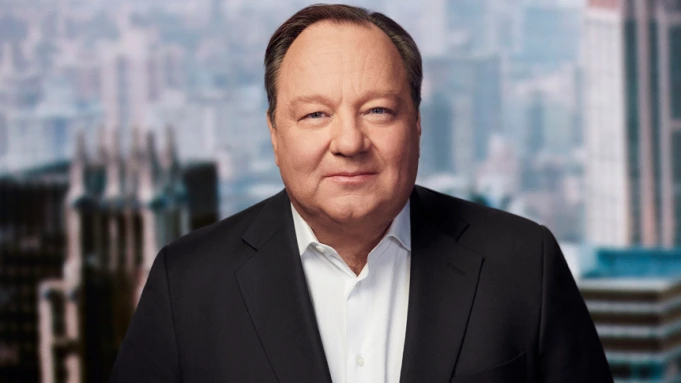Warming up to the Future of Retail: Customer Centric, Technology First
SOURCE: HTTPS://WWW.INDIANRETAILER.COM/
NOV 06, 2023
Paramount CEO: Advertising Market “Headwinds” Are “Short-Term” Problem
SOURCE: HOLLYWOODREPORTER.COM
AUG 04, 2022

“While we clearly navigate some near-term headwinds in the macroeconomic environment, (the second quarter) shows we have the assets, strategy and ability to compete and win over the long term,” Paramount Global president and CEO Bob Bakish said in opening the company’s second-quarter earnings conference call Thursday.
He later mentioned “some challenges” in the advertising scatter market and in digital ads, mentioning that auto ad spending has been hit by supply-chain problems, for example, and acknowledging that the company wasn’t immune to that. “But these aren’t long-term issues. They are short-term challenges we just got to work through,” he argued.


He also noted that travel and other ad categories, including political ad spend, which is benefiting from the midterm elections later this year, are showing strength though, meaning there are “tailwinds” and headwinds in the broader ad market.
Analysts have predicted an advertising hit for Paramount and other entertainment conglomerates ahead amid high inflation and economic storm clouds. Given Paramount’s bigger ad exposure compared to key rivals, some have recently reduced their forecasts for the company’s ad revenue.
But on Thursday’s call, Bakish touted the company’s successful content at the box office, on TV and in streaming, its streaming growth and overall reach as key benefits even in a challenging environment. Paramount grew its overall streaming subscribers to nearly 64 million, with Paramount+ alone topping 43 million. “Because our assets continue to perform impressively across TV and streaming, advertisers are taking note even amid broader market uncertainty,” he said, calling Paramount “the ideal advertising partner” that can help marketers with its scale and efficiency.
“Our audience reach across (various TV and streaming platforms) represents a connected viewing ecosystem that produces over 1 trillion ad impressions per year,” he touted. But “in a competitive market, scale isn’t enough,” where Paramount offers access to a wide range of audiences across all demographics “at competitive pricing.” Bakish argued that this “makes Paramount a must-buy for marketers who need to efficiently aggregate awareness around their product.” And, he said, “we see our partners responding enthusiastically.”
The CEO also touted that Paramount “recently had our strongest multiplatform, unified upfront yet,” sharing that broadcast and cable ad rates were up in the high single-digit percentage range and digital volume grew in the range of 30 percent. “We grew share” in the upfront, Bakish argued.
All of this “differentiates Paramount in the ad marketplace and makes us a must-have partner for advertisers,” he concluded, touting Paramount’s success across various screens. “Advertising partners are eager to get a share of it all.”
CFO Naveen Chopra also noted macroeconomic “headwinds” during the call early in the day, saying they would have “some impact” over the near-term. But he also argued that rising ad rates and political ad spending during the back-half of 2022 would offset some of that impact.
Asked later if management’s streaming revenue growth target of 60 percent for 2022 was still intact, Chopra said: “We continue to expect very healthy…growth. But obviously given the macro advertising headwinds and the fact that there is a little bit less visibility in the back-half of the year, it is possible we may not get all the way to that 50 percent, but I think we will probably be relatively close.”
Jeff Shell, CEO of Comcast’s entertainment unit NBCUniversal, recently also discussed ad trends amid economic headwinds, saying that “the advertising market is choppy.” He explained: “Some segments are doing better, some segments are doing worse.” The TV upfront was “way better than we expected” for the company, he touted though. “So, definitely some choppiness, but nothing really that dramatic,” Shell concluded.
Wall Street analysts and investors had gone into the latest earnings season wondering what Hollywood top executives would say about gathering economic storm clouds, high inflation and their impact on the ad outlook in the back-half of 2022. Many have feared a recession that would hit ad revenue at entertainment industry conglomerates.
MoffettNathanson analyst Michael Nathanson in a recent report argued that Paramount would be one of the first Hollywood powerhouses to feel ad pain. “Looking back at prior recessions, traditional media ad formats such as TV and print focused on brand advertising, have notably underperformed online advertising,” the expert highlighted. “We think that this time shouldn’t be that different.”
Nathanson downgraded his rating on Paramount shares from “market perform” to “underperform” and cut his stock price target by $12 to $18, explaining: “Despite the continued momentum at Paramount+, we downgrade Paramount as the growing risk of lower advertising puts additional pressure on the company’s ability to grow earnings before interest, taxes, depreciation and amortisation (EBITDA) and free cash flow (FCF) to match prior levels.”
Reducing his financial forecasts, the analyst dropped his 2022 EBITDA estimate by 6.0 percent to $3.61 billion and his 2023 EBITDA projection by 7.1 percent to $3.16 billion.
A star performance from Tom Cruise won’t help Paramount much here, Nathanson argued. “Despite the strength from Top Gun: Maverick driven upside to the second quarter, we decrease our full-year EBITDA estimates…to reflect the more challenging ad backdrop,” he explained ahead of Thursday’s earnings update.

LATEST NEWS
WHAT'S TRENDING


Data Science
5 Imaginative Data Science Projects That Can Make Your Portfolio Stand Out
OCT 05, 2022

SOURCE: HTTPS://WWW.INDIANRETAILER.COM/
NOV 06, 2023
SOURCE: HTTPS://DIGIDAY.COM/
SEP 22, 2023
SOURCE: HTTPS://WWW.EXCHANGE4MEDIA.COM/
AUG 21, 2023
SOURCE: HTTPS://WWW.SCIENCEDAILY.COM/
AUG 14, 2023
SOURCE: HTTPS://WWW.EY.COM/EN_IN/FUTURE-CONSUMER-INDEX/CONSUMER-IS-THE-KING-CONSUMER-EXPERIENCE-IS-THE-PRIORITY
JUN 30, 2023
SOURCE: HTTPS://WWW.PITCHONNET.COM/MARKETING-MOMENTS/HOW-CREATIVE-TECH-IS-SCRIPTING-A-NEW-FUTURE-IN-INDIAN-ADVERTISING-32957.HTML
JUN 27, 2023
SOURCE: HTTPS://WWW.BUSINESSINSIDER.IN/BI-INTELLIGENCE/NEWS/CHATGPT-AND-GENERATIVE-AI-IN-MEDIA-AND-ADVERTISING-WITH-USE-CASES-SET-THE-BATTLE-FOR-HEARTS-AND-MINDS-BEGINS/ARTICLESHOW/100286369.CMS
JUN 26, 2023
SOURCE: ARIN WAICHULIS II HTTPS://9TO5MAC.COM/2023/01/22/APPLES-ICONIC-1984-SUPER-BOWL-AD-AIRED-ON-THIS-DAY-39-YEARS-AGO/
JAN 22, 2023